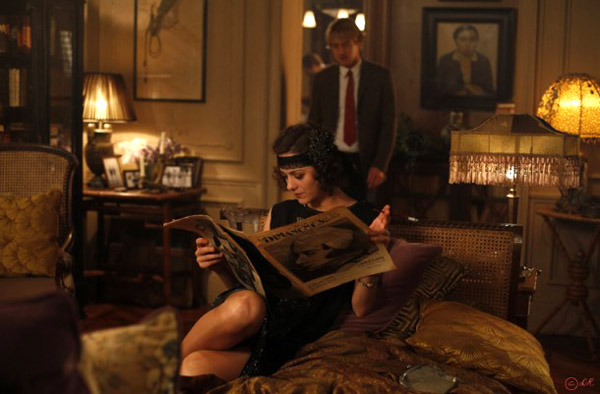
The Stein Salon, in "Midnight in Paris"
"All our recent accessions are unfortunately by people you never heard of so there's no use trying to describe them, except that one of those out of the salon [the Matisse] made everybody laugh except a few who got mad about it and two other pictures are by a young Spaniard named Picasso whom I consider a genius of very great magnitude."
~ Leo Stein, 1905
Hello, it's Erika from small shop! Since "Midnight in Paris" is one of Paloma's favorite movies, I thought it would be fun to discuss that all-important artist hub in the film: Gertrude Stein's salon, and its significance in the development of Modern Art through the artists Matisse and Picasso.
Gertrude Stein was an American-born writer living in Jazz-Age Paris in the early 20th century. With her brother Leo, she began collecting inexpensive pieces by unknown artists, and eventually, their home became a center of creativity, critique and collaboration. The Steins' salon was the ONLY resource for avant-garde art at the time, and "Saturday Evenings" in their living room at 27 Rue de Fleurus became a tradition. And thank goodness — it is because of their patronage and their willingness to make their collection accessible that early modern art thrived. It's no wonder Woody Allen wanted to recreate such magical moments!
Let's brush up on the major players here and what they're known for.
* * *
CEZANNE = Post-Impressionism, 1886-1914
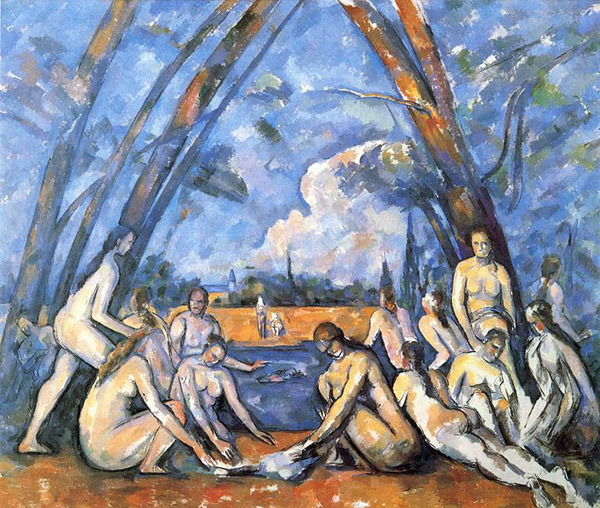
"The Bathers" by Cezanne, 1905
Paul Cézanne (from the previous period) would not have participated in person in Stein's salon, but pieces of his including "The Bathers" (above, considered a masterpiece of modern art) and "Portrait of Mme. Cézanne" were on display there. There is little doubt that his work heavily influenced both Matisse and Picasso who claimed Cézanne to be "the father of us all." Cézanne (and Post-Impressionist contemporaries Gauguin and Van Gogh) took Impressionism of the late 1800's to the next level by experimenting with flat areas of color and geometric shapes. These ideas were further developed into Cubism by Picasso, Braque and Gris.
* * *
MATISSE = Fauvism, 1900-1910 (in his early career)
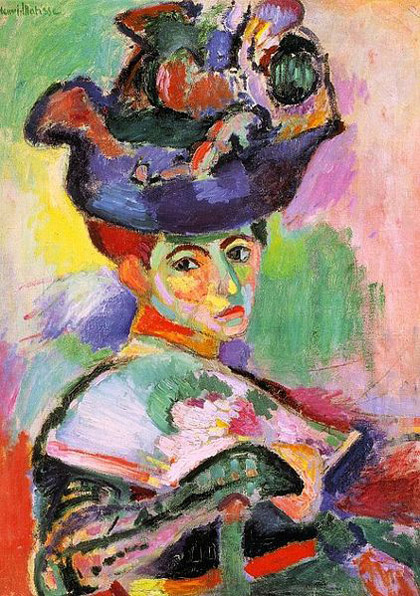
"Woman with a Hat" by Matisse, 1905
The Steins purchased an early work of Henri Matisse's, "The Woman with a Hat" (above), after an extremely poor reception at the 1905 Salon d'Automne. In the "Fauves" style (considered the first avant-garde movement), it was an important piece because like the rest of Matisse's career, he experimented with the use of unnatural color and simplification of forms. "Le Bonheur de Vivre" (below) was another acquisition of the Steins', one that cemented Matisse's place as a leader of a new school of painting.
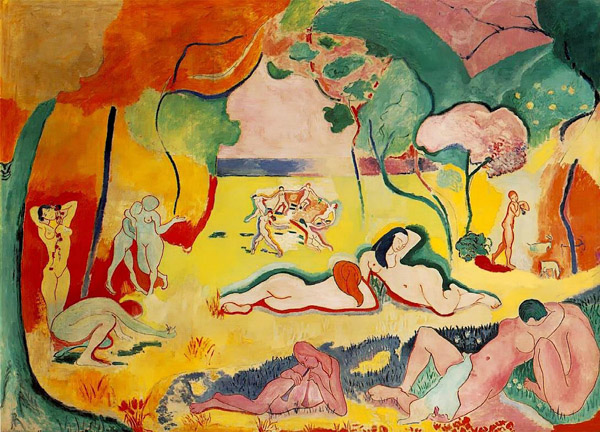
"Le Bonheur de Vivre" by Matisse, 1906
Gertrude's brother Michael and his wife Sarah became life-long patrons of Matisse, and eventually their apartment held the largest collection of his work outside of his own studio. Matisse enjoyed a long 50-year career in various media (later known for his collage "cutouts"), and is regarded as one of the founders of Modern Art.
* * *
PICASSO = Cubism, 1907-1918
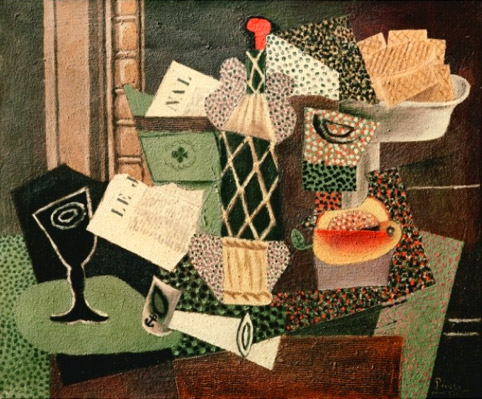
"Still Life with a Bottle of Rum" by Picasso, 1914
You know Picasso as the founder of Cubism. But he may not have been able to get to that point if it weren't for the unending support of Gertrude Stein throughout his entire career. It was at 27 Rue de Fleurus that he and Matisse (12 years his senior) met in 1905 and became life-long friends and rivals. The Steins owned over a hundred of his drawings, several watercolors as well, and would often bring friends by the salon to view and purchase Picasso works to support the artist. But it is because of Cézanne and Matisse before him, Picasso was able to take abstraction further to represent his subjects from multiple viewpoints, deconstructing and reconstructing them.
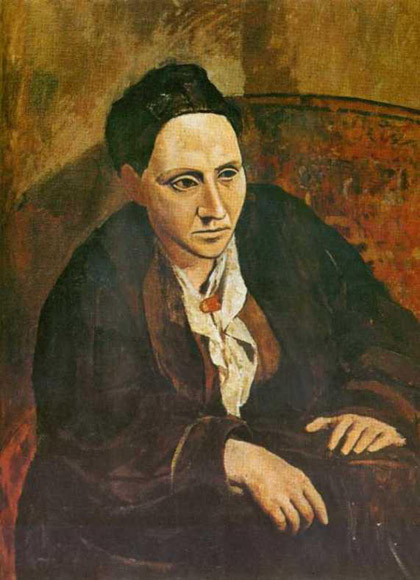
Portrait of Gertrude Stein by Picasso, 1906
It is often said that Gertrude Stein's own writing style can be described as "Cubist" as well, in its deconstruction of grammar, structure and syntax. I find it fascinating that she was able to translate a purely visual style into a literary one!
* * *
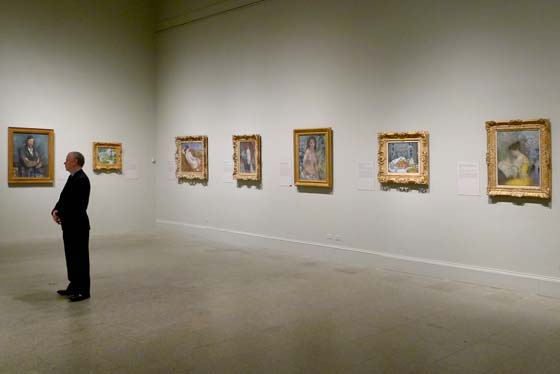
"The Steins Collect" at The Metropolitan Museum of Art
If you are fortunate enough to be in New York before June 3rd (I'll be there next week!), the Met has on display 200 works from the Steins' collection, focusing on Matisse and Picasso. I cannot wait — there is nothing like seeing art in context, and examining the progression and influences of styles!
Au revoir,







0 comments:
Post a Comment